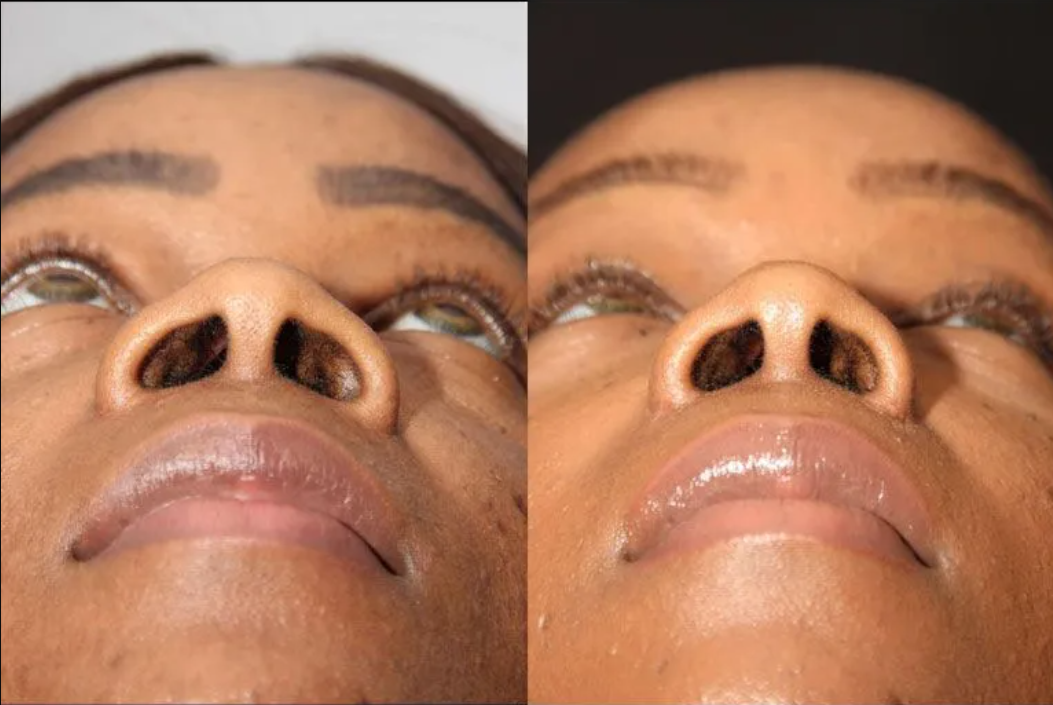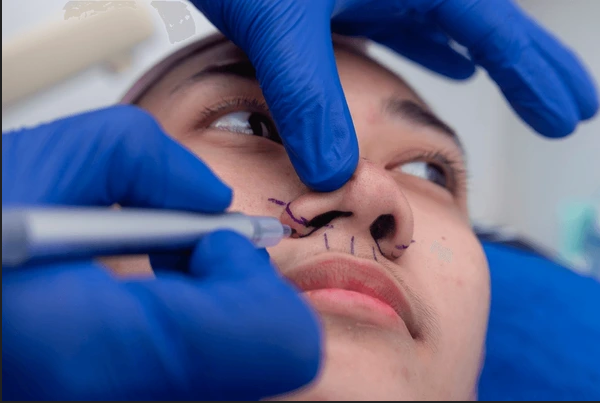Alaplasty is a specialized surgical procedure aimed at reshaping or reconstructing the nasal ala — the wing-like outer portion of the nostril that helps define the nose's shape and function. This procedure may be performed for cosmetic reasons to improve nasal symmetry and aesthetics or for functional purposes to correct deformities affecting breathing.

The nasal ala plays a vital role in the contour and proportion of the nose, influencing overall facial harmony. Conditions affecting the ala, whether congenital, traumatic, or iatrogenic, can cause both cosmetic dissatisfaction and functional impairment such as nasal valve collapse leading to breathing difficulties.
Alaplasty encompasses a variety of surgical techniques tailored to the patient’s unique nasal anatomy and the underlying cause of deformity. It is commonly performed by facial plastic surgeons or otolaryngologists experienced in rhinoplasty and reconstructive nasal surgery.
This article provides an in-depth overview of alaplasty, including indications, risk factors, clinical presentation, diagnostic workup, treatment options, postoperative management, complications, and living with the results.
Alar deformities are generally a consequence of multiple etiologies which may co-exist, requiring surgical intervention:
Congenital Causes
- left Lip and Palate: Often associated with alar base asymmetry and malformations.
- Genetic Syndromes: Conditions such as Binder syndrome or craniofacial microsomia may manifest with alar hypoplasia or distortion.
- Developmental Anomalies: Resulting in asymmetrical nostrils or deficient soft tissue.
Traumatic Causes
- Nasal Fractures and Lacerations: Injuries leading to cartilage damage and scar contracture.
- Burns: Thermal or chemical burns causing skin contracture and tissue loss.
- Iatrogenic Injury: Complications from prior nasal surgeries or injections causing tissue necrosis or distortion.
Acquired Causes
- Infections: Chronic or necrotizing infections causing tissue destruction.
- Tumors and Oncologic Resections: Surgical excision of malignancies such as basal or squamous cell carcinoma often requires reconstructive alaplasty.
- Aging: Loss of skin elasticity and subcutaneous tissue leading to drooping or thinning of the alar rim.
- Previous Rhinoplasty Complications: Over-resection or improper healing causing alar collapse or notching.
Risk Factors
- Smoking: Impairs vascularity and wound healing.
- Poor Nutritional Status: Delays recovery.
- Systemic Diseases: Diabetes, autoimmune conditions may affect tissue integrity.
- Repeated Trauma or Surgery: Increases scarring and complicates reconstruction.
Patients with alar deformities present with a combination of functional and aesthetic complaints:
Functional Symptoms
- Nasal Obstruction: Due to alar collapse, stenosis, or retraction limiting airflow through the nostrils.
- Difficulty Breathing During Exertion: Worsening symptoms during physical activity or nasal congestion.
- Recurrent Infections: Secondary to impaired airflow and mucosal drying.
Aesthetic Concerns
- Visible Asymmetry: One nostril larger, drooping, or displaced compared to the other.
- Notching or Retraction: Pinched or elevated alar rim altering nasal silhouette.
- Loss of Nostril Definition: Blunting or irregularity of the alar contour.
- Scarring or Skin Discoloration: From trauma or surgery.
Clinical Examination Findings
- Palpable Defects: Thinning or absence of soft tissue or cartilage.
- Dynamic Collapse: On inspiration, affected ala may collapse inward.
- Surface Irregularities: Including scar bands, retracted skin, or contour irregularities.
Diagnosis is primarily clinical but may be supplemented with imaging and functional testing:
Clinical Evaluation
- Detailed History: Including onset, trauma, prior surgeries, symptoms, and functional impact.
- Physical Examination: Assess symmetry, nostril size, alar mobility, and skin quality.
- Photographic Documentation: Standardized photos for surgical planning and outcome comparison.
- Anterior Rhinoscopy and Nasal Endoscopy: Evaluate internal nasal structures and airway patency.
Imaging Studies
- 3D CT Scan: Provides detailed anatomical information on cartilage and bone, essential in complex trauma or oncologic cases.
- MRI: Useful for soft tissue characterization in tumors or infections.
Functional Testing
- Rhinomanometry or Acoustic Rhinometry: Quantify nasal airflow and obstruction.
- Nasal Valve Assessment: Determine the contribution of alar support to airflow limitation.
Reconstructive Techniques
- Local Flaps: Utilize adjacent nasal or cheek skin to cover defects with good color and texture match, such as the nasolabial flap.
- Cartilage Grafts: Harvested from the auricle (ear), septum, or rib to restore structural support and prevent collapse.
- Skin Grafting: Full-thickness or split-thickness grafts used when local tissue is insufficient.
- Z-Plasty and W-Plasty: Scar revision techniques improving contracture and functional outcomes.
- Composite Grafts: Combining skin and cartilage for complex full-thickness defects.
Surgical Approaches
- Open Approach: For large or complex deformities requiring direct visualization.
- Closed Approach: Minimally invasive for minor reshaping or scar revision.
Adjunctive Treatments
- Laser Therapy: To improve scar appearance.
- Steroid Injections: For hypertrophic scars or keloids.
Preoperative Optimization
Smoking cessation, nutritional support, and medical evaluation are crucial to enhance surgical success.
While some deformities are unavoidable due to congenital or traumatic causes, prevention includes:
- Protective Measures: Helmets or facial guards during contact sports or risky activities.
- Early Treatment of Nasal Injuries: Prompt reduction and repair to minimize deformity.
- Infection Control: Timely antibiotics and wound care to prevent tissue necrosis.
- Careful Surgical Technique: Adherence to principles of nasal preservation during rhinoplasty or other nasal surgeries.
Possible complications must be carefully discussed with patients:
- Infection: Prevented by sterile technique and perioperative antibiotics.
- Hematoma or Seroma: Requires drainage if significant.
- Poor Wound Healing: Common in smokers or diabetics.
- Scarring: May necessitate revision surgery.
- Alar Retraction or Notching: Resulting from excessive tissue removal or contraction.
- Cartilage Graft Resorption or Warping: Affecting nasal contour.
- Nasal Obstruction: If support is inadequate or over-corrected.
Recovery Timeline
- Immediate Postoperative Phase: Swelling, bruising, and mild discomfort are expected. Nasal splints may be applied.
- First Few Weeks: Gradual resolution of edema, suture removal, and activity restrictions.
- Long-Term: Full aesthetic results may take 6-12 months.
Patient Guidance
- Avoid trauma or pressure to the nose.
- Follow wound care instructions carefully.
- Attend all follow-up appointments.
- Report any signs of infection or excessive pain immediately.
Psychological Impact
Reconstruction often significantly improves self-esteem and social confidence. Support groups or counseling may benefit patients adjusting to changes in appearance.
1. What is alaplasty?
Alaplasty is a cosmetic surgical procedure aimed at reshaping or reducing the size of the nasal alae (the outer edges or “wings” of the nostrils). It enhances the nose’s overall appearance by narrowing wide nostrils or improving nasal symmetry.
2. Who is a good candidate for alaplasty?
Good candidates are individuals unhappy with the width or shape of their nostrils, often due to genetics, previous trauma, or ethnic nasal characteristics. Candidates should be in good health, have realistic expectations, and be nonsmokers or willing to quit before surgery.
3. How is alaplasty performed?
The procedure is usually done under local anesthesia or sedation. The surgeon makes small incisions at the base of the nostrils, removes or repositions tissue, and then sutures the area to create a narrower, more refined nostril shape.
4. How long does the surgery take, and what is the recovery time?
Alaplasty typically takes 30 to 60 minutes. Recovery is relatively quick; most patients experience swelling and mild discomfort for 1-2 weeks and can return to work or school within a week.
5. Will the scars be visible after alaplasty?
Scars are minimal and strategically placed along natural creases at the nostril base, making them nearly invisible once fully healed.
6. What are the risks and complications of alaplasty?
Possible risks include infection, bleeding, asymmetry, poor wound healing, and temporary or permanent changes in nasal sensation. Choosing a qualified plastic surgeon reduces these risks significantly.
7. Can alaplasty be combined with other nasal surgeries?
Yes, alaplasty is often performed alongside rhinoplasty (nose reshaping) to achieve comprehensive nasal enhancement tailored to the patient’s goals.
8. Is alaplasty painful?
Most patients report only mild discomfort during recovery. Pain is manageable with prescribed medications, and local anesthesia ensures the procedure itself is pain-free.
9. How long do results from alaplasty last?
Results are typically permanent. However, changes due to aging or trauma may affect nasal shape over time.
10. How much does alaplasty cost?
Costs vary depending on the surgeon’s expertise and location. It’s important to consider consultation, surgery, anesthesia, and facility fees when budgeting.
Few Popular Hospitals for Alaplasty are:
Thailand, Malaysia, Singapore, TurkeyandIndiaare the most cost effective locations that offer up to almost 80% savings in comparison to the US.
SurgeryPlanet facilitates a plethora of services to the medical treatment traveler also which includes, a hassle free and discounted travel option, a welcome hand at the airport on arrival, travel in an air-conditioned car, round the clock service & support. Your medical evaluation is pre arranged with the least of waiting time. Once your assessment is complete and found medically fit, the procedure is immediately scheduled without a waiting period. Please read through our Services and Testimonials to understand and select your best options.
Major Treatments Abroad: Obesity / Bariatric Surgery | Spine Surgery | Stem Cell therapy | Fertility treatment | Knee replacement in India and Thailand | Heart Surgery | Organ transplant | Ayurveda Treatment | Heart valve replacement | Hip resurfacing | Hospitals in India and Thailand for Laparoscopic Sterilization| Best hospitals in Asia | JCI & ISO certified Hospitals | Cost effective medical procedures | Healthcare tourism | Complete privacy for affordable cost | Weight loss procedures | Infertility treatment | Board certified physicians | Low cost surgeries
SurgeryPlanet is an Healthcare Facilitator and not a Medical service provider. The information provided in this website is not to be used for diagnosis or treatment of any medical condition or use for any medical purposes. We provide information solely for medical travel facilitation and do not endorse any particular health care provider, hospital, facility, destination or any healthcare service or treatment listed. We are not an agent for, or affiliated to any health care provider, or service listed in our website and is not responsible for health care services provided by them. Choice of hospital or doctor for your healthcare services is your independent decision. Consult your domestic licensed health care provider before seeking the services of any health care provider you learn about from our website.


